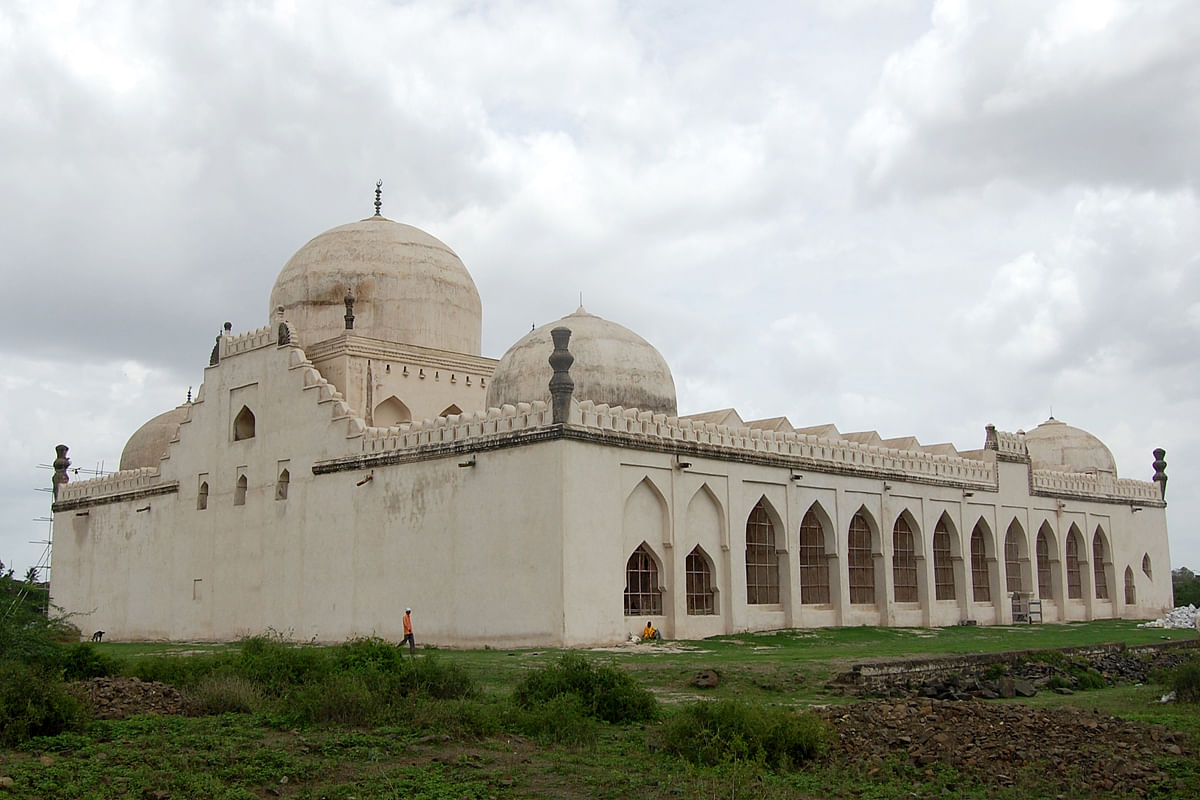

It’s a mosque within the Gulbarga Fort. It takes the style of Persian architecture. It lacks the typical courtyard associated with mosques. It was constructed during the rule of the Bahmani kings, who took special interest in contemporising places of worship. And it’s a mosque that stands out...
While walking around the outer part of the fort, the iconic Jama Masjid lingers in the distance. One can reach this mosque by entering the eastern gate — the main entrance — and passing through two small arches.
Jama Masjid was built during the reign of Mohammed Shah I, the king who employed local masons and stone-carving artisans during its construction.
Elevated
The mosque stands on a 10-feet-high basement. The plan elevation measures 216 by 177 feet. According to historical records, architect Rafi of Qazvin constructed it in 1367 AD.
Some historians say this mosque is a replica of Spain’s Mosque of Cordoba.
The masjid, bejewelled with stucco work, also has a capacity to hold 5,000 people for prayers at a time.
There are two big black-stone-carved vessels stored with water at the main entrance. It’s a practice to purify oneself before praying.
Two black-stone inscriptions stand at the entrance. One bears the name of the first sultan, Ala-ud-Din Bahman Shah (founder of the kingdom), and the other one is a verse in Persian (Ayat-ul-kursi) from the Quran.
The arched, 50-feet-high main entrance of this mosque is in Turkish style. There are 250 arches inside the building, too. One can view all the arches by standing anywhere inside the mosque.
The area of mihrab (Where the imam stands to perform namaz) and mimbar (From where the imam speaks) has a three-arched, flat-surfaced wall. Mehrab is designed in a way to be seen by a visitor standing anywhere inside the mosque. Every arch carries Persian scripts bearing the names of the prophet’s family members. There are also types of stucco work embossed in geometrical forms, freehand designs and floral patterns.
Another feature of the mosque are the many-sized domes.
A big dome is erected towards the west, due to which any sound echoes throughout the hall. This dome is supported with wooden slabs laid horizontally from all sides. It stands 10 feet above the roof.
Inside the dome are 24 small arches and minaret decoration. It has ventilators and small space created through which sun rays enter. There are also 107 smaller domes on the roof, either designed as half-circles or pyramidal in style. There are four medium-sized domes on each corner as well. The parapet wall has trifoliate designs on three sides, except on the west-facing wall. Made of black stones, the windows are designed in such a way that the interior hall has a cool temperature even in summers. There is ample room for cross-ventilation.
To the south of Jama Masjid lies an armoury, and on the eastern wall, a Sufi tomb belonging to that reign is well maintained. This mosque is maintained under the aegis of the Archaeological Survey of India. It was renovated some years ago. It is open for the public throughout the year, from fajar (before sunrise) to isha (after sunset).
Photography is allowed inside the monument.
There is a vantage point: the ranmandal, a structure that has three cannons.
All the 18 Bahmani kings played their role in keeping the icon in shape during their 200 years of rule in Kalaburagi and Bidar.